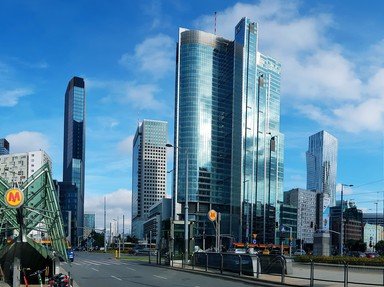Quiz Answer Key and Fun Facts
1. One of the oldest major brands of soda created in the US came from the brain of Charles Alderton, a pharmacist from Waco, Texas, in 1885. What cola brand was marketed as a unique brain tonic and energy-giving drink, suggesting that it curbed hunger (and that "10, 2, and 4" were fine times for a drink)?
2. What brand, marketed as a brain tonic and nerve stimulator, was first sold at Jacob's Pharmacy in Atlanta by former Confederate soldier Dr. John S. Pemberton?
3. This cola was invented in 1893 by Caleb Bradham, a North Carolinian pharmacist, and was originally branded as "Brad's Drink." What brand claimed to contain a digestive enzyme and was marketed as a digestive aid and energy booster?
4. This caffeine-free "uncola" came to the game late during the early days of the Great Depression. Sources disagree on the original name of the product, but they all agree that it claimed to contain lithium citrate, a mood-stabilizing drug. What's the name of this soda today?
5. The 349 Incident (Pepsi Number Fever) was a massive promotional failure for PepsiCo that led to rioting and death in what island nation in 1992?
6. This caffeine-free brand was first introduced by the Coca-Cola company in 1961 as an alternative to a competing product. Named after a mischievous little elfin character used in Coke ads during the 1940s, what was the name of this soda with a unique "lymon" flavor?
7. This spiced soda brand produced by Coca-Cola in 1972 was originally named "Peppo" until Dr. Pepper took umbrage and sued the company for trademark infringement. It went through a second name change and reformulation in 2001 and is now known as what?
8. What corporation once became (on paper) the sixth largest military power in the world, having been paid by the fading Soviet Union with a fleet of ships and submarines?
9. What soda brand has had mascots named "Fido Dido" and, more mysteriously, "The Spot"?
10. This brand of soda was one of the first mass-produced soft drinks in the United States and is actually the Official Soft Drink of Maine. Purchased by the Coca-Cola Company in 2018, what brand of soda, created in the 1870s by Augustin Thompson, was originally sold as a patent medicine?
Source: Author
JJHorner
This quiz was reviewed by FunTrivia editor
stedman before going online.
Any errors found in FunTrivia content are routinely corrected through our feedback system.
